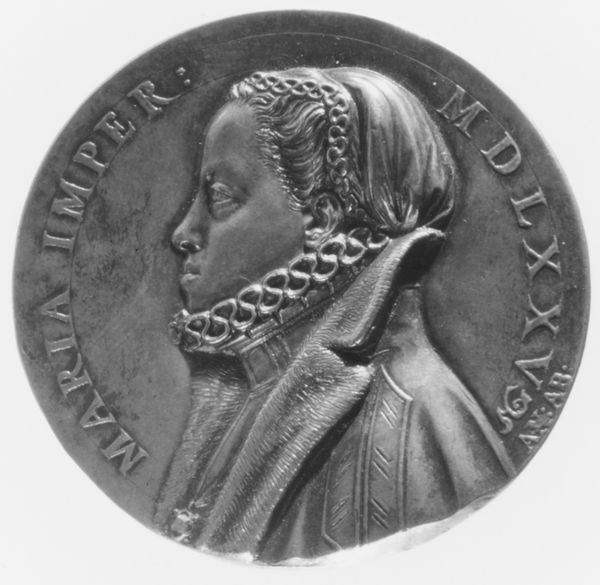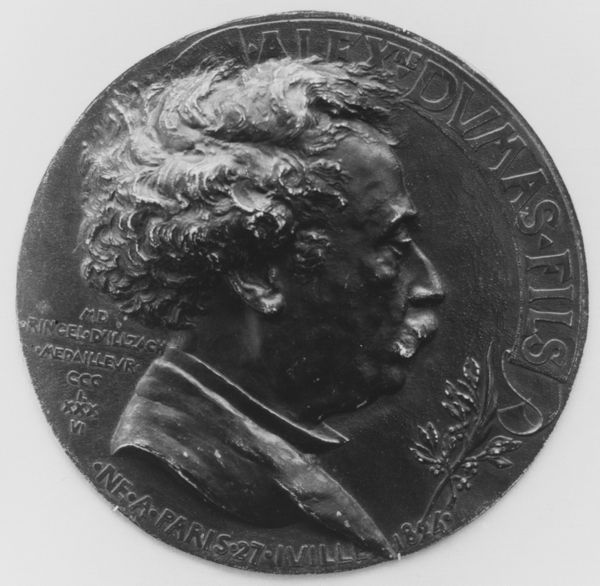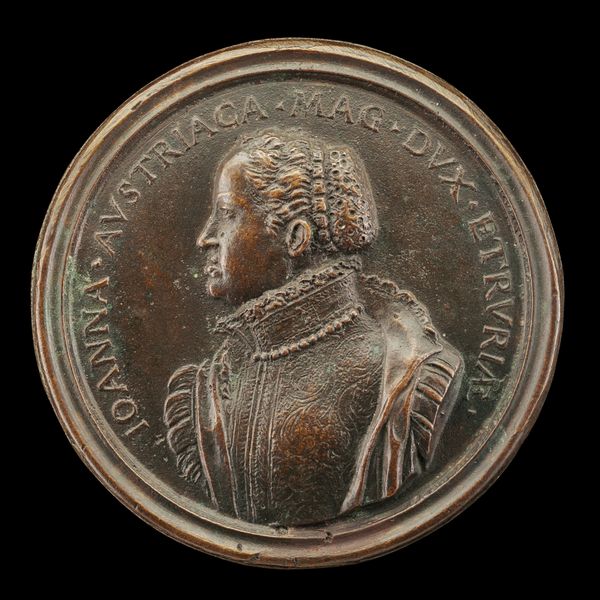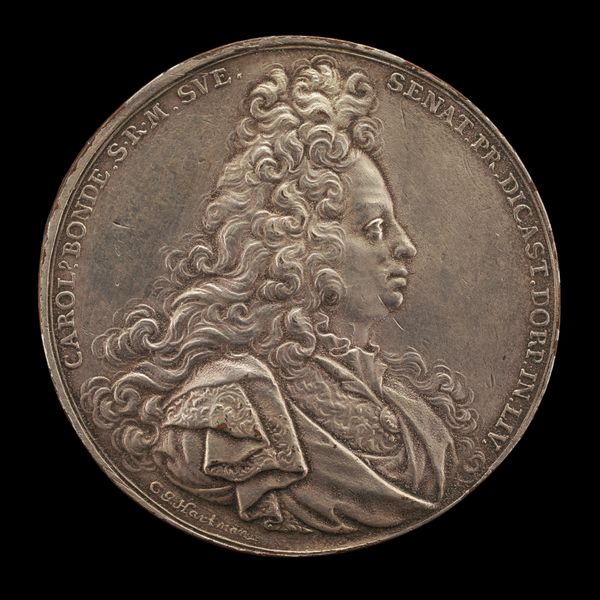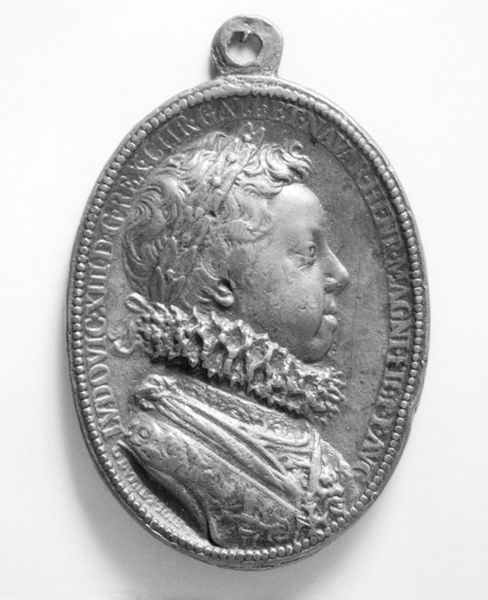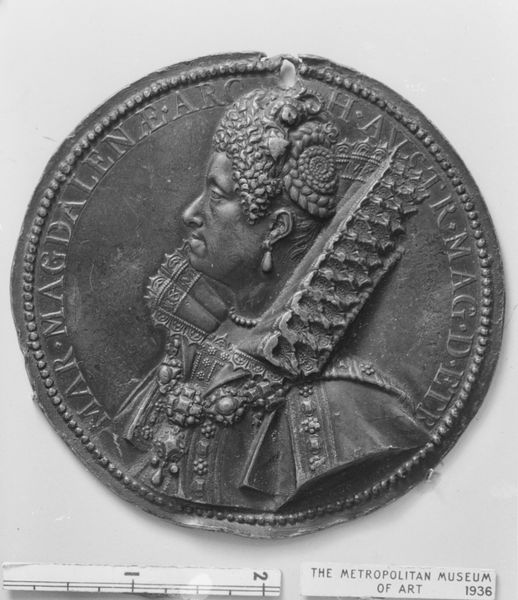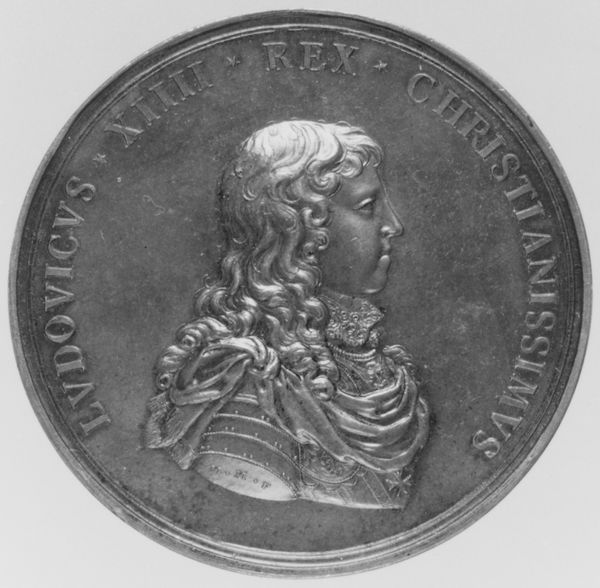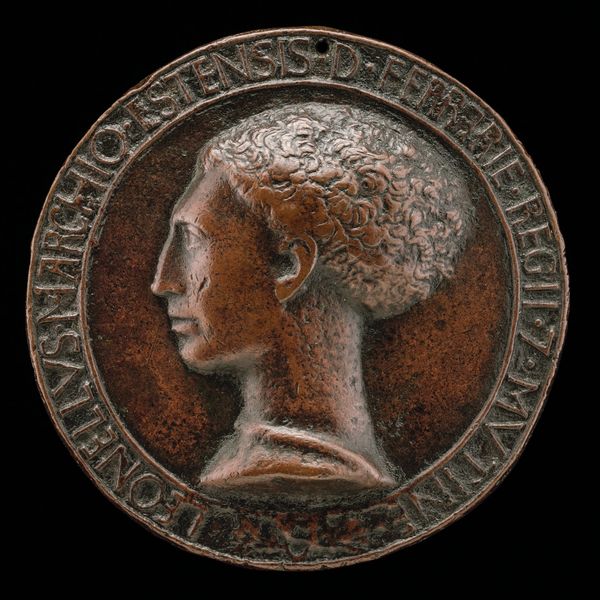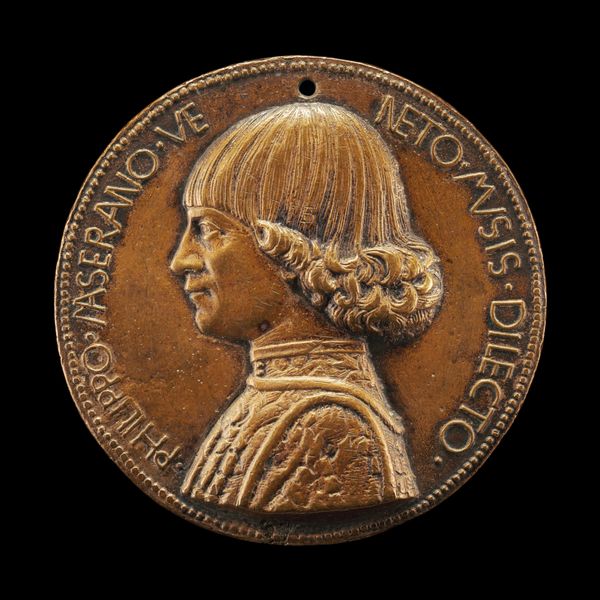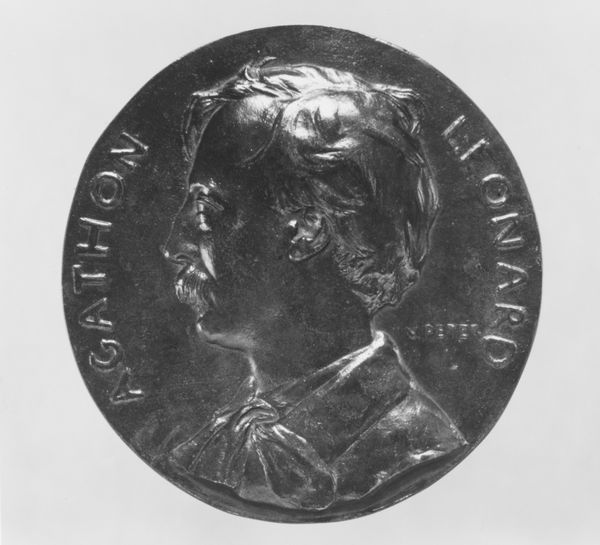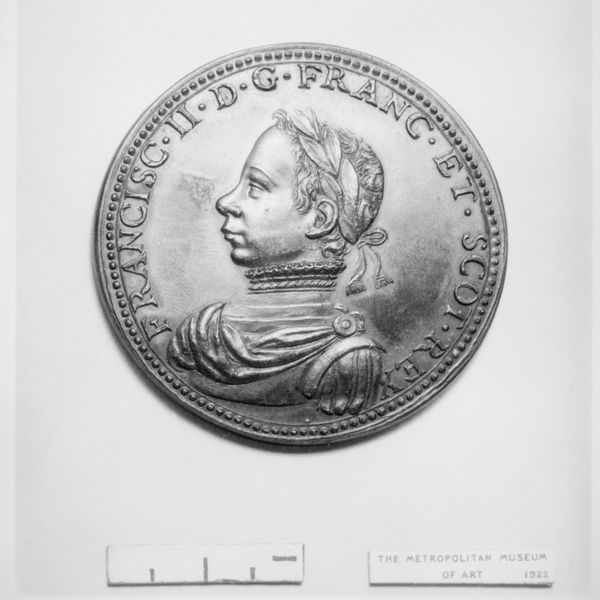
Francesco IV Gonzaga, Duke of Mantua (1586–1612) 1612
0:00
0:00
metal, relief, sculpture
#
portrait
#
metal
#
sculpture
#
relief
#
11_renaissance
#
sculpture
#
decorative-art
#
italian-renaissance
Dimensions: Diam. 6 1/2 in. (165 mm.)
Copyright: Public Domain
Curator: Looking at this metal relief, Guillaume Dupré presents us with a portrait of Francesco IV Gonzaga, Duke of Mantua, created in 1612. It's currently held here at the Metropolitan Museum of Art. Editor: Woah, he looks pretty serious! Very formal, I get a definite "don't mess with me" vibe. Almost feels like staring into a history textbook. But...in a good way? It’s got such texture, doesn’t it? I just want to touch it! Curator: Right! Let's consider that formal aspect. This portrait was likely commissioned to project power and legitimacy. Notice the armor; it isn’t just clothing, but a deliberate choice indicating strength and military authority, linking him to a lineage of rulers and warriors. And then there's the crisp ruff framing his face...a literal halo of status. Editor: You’re right, it really screams powerful elite! All those meticulous details on his breastplate must have taken ages. I love thinking about how it felt for Dupré to create that level of finery. He obviously put so much care into highlighting every little curl in the Duke’s hair and every fold of that dramatic collar. And he gave him such a strong jawline! It feels less like looking at someone and more like standing in the presence of sheer unwavering conviction! Curator: Absolutely. Moreover, it invites a fascinating dialogue about performative masculinity and aristocratic identity in the 17th century. How much of this portrayal is reality, and how much is constructed for political effect? And what was its reception then, compared to how we perceive it today through modern eyes focused on identity, representation, and power dynamics? Editor: It really makes you wonder what he was *really* like! Was he kind? Witty? Cruel? Did he secretly love to paint watercolors or play a lute? The weight of history is so fascinating. It really gets me thinking about the stories that get told and, more importantly, the stories that *don’t*. Thanks for shedding more light on this! Curator: Thanks for allowing a fresh perspective on how we relate to individuals in powerful positions through time.
Comments
No comments
Be the first to comment and join the conversation on the ultimate creative platform.
